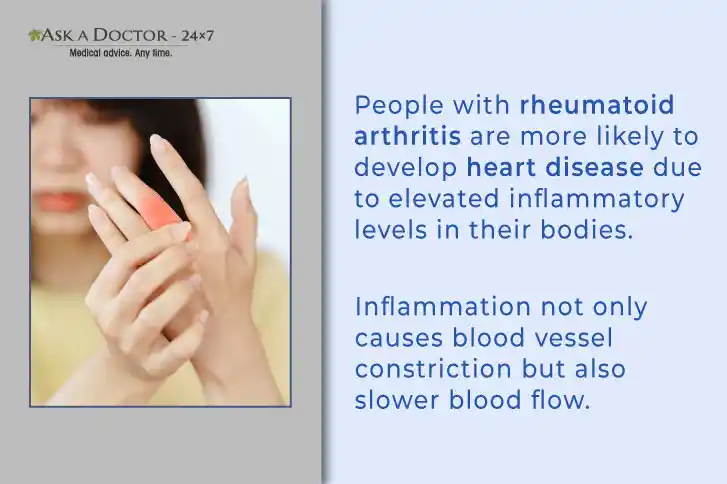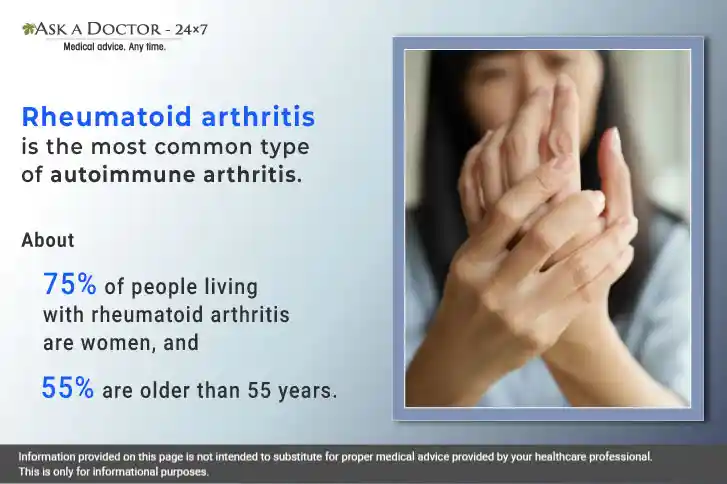Rheumatoid Arthritis (RA): Identify The Causes, Signs, And Solutions Of RA
Have you been dealing with frequent bone aches and sickness for several weeks or even months, and it seems to be getting worse? Do your hands or other joints have frequent cramps and stiffness, particularly in the morning that take hours before loosening up? If you answered yes, then it becomes imperative for you to know that frequent muscle cramps can occur due to some underlying medical problems such as autoimmune disease, or rheumatoid arthritis (RA).
RA can cause hand cramps in addition to cramping in other regions of the body like the wrists, elbows, feet, ankles, and knees. Let us understand rheumatoid arthritis and how to detect its signs and symptoms for prompt diagnosis and treatment.
What is Rheumatoid Arthritis?

Rheumatoid arthritis (RA) is a kind of arthritis characterized by the body attacking its own healthy cells, leading to discomfort in the afflicted joints and other body parts. There are periods when RA symptoms worsen, referred to as flares, and periods when they get better, referred to as remissions.
RA is characterized by the same symptoms on both sides of the body, involving both hands or both knees. Signs and symptoms of RA include:
- Hand cramps
- Joint aches, discomfort, and stiffness in more than one joint
- Morning joint stiffness (usually lasts more than 30 minutes)
- Joint swelling and inflammation
- Decreased range of motion
- Low-grade fever, fatigue, and weakness
- Decreased appetite and weight loss
- Depression and mood changes
As the lining of the joint tissue is inflamed in RA-affected joints, it could eventually lead to joint tissue damage. This tissue damage can result in deformity, unsteadiness (loss of balance), and chronic or persistent discomfort.
What Causes Rheumatoid Arthritis and Associated Risk Factors?
As we have understood, rheumatoid arthritis is a result of the immune system of the body targeting its own healthy cells as part of an immunological reaction. Although the precise origins of RA are unknown, several variables might raise one's chance of getting the illness. Let’s explore the associated risk factors for the disease:
- Family history: The risk is higher if a close family member has RA. Individuals with particular genes from birth have a greater predilection to RA, like HLA (human leukocyte antigen) class II genotypes, which can exacerbate arthritis. Those who carry these genes may be more susceptible to RA if they smoke or are obese, among other environmental variables.
- Age: RA can start at any age; the likelihood rises with age. The majority of people in their sixties experience the start of RA.
- Gender: Women are more prone than men and usually experience two to three times as many new cases of RA as compared to men.
- Smoking: Cigarette smoking not only increases a person’s risk of developing RA but can also make it worse.
- Obesity: Being obese increases the risk of RA. Also, obesity is associated with metabolic syndrome, which can exacerbate RA symptoms. Obesity, metabolic syndrome, and RA are all associated with inflammation.
- Stress: Ongoing stress can worsen RA. Individuals with rheumatoid arthritis have reported the appearance of their symptoms shortly after stressful or traumatic events.
Ways to Minimize Rheumatoid Arthritis Symptoms

There is no cure for rheumatoid arthritis. However, early therapy with pharmaceuticals known as disease-modifying antirheumatic drugs (DMARDs) increases the likelihood of symptom remission. Ways to minimize rheumatoid arthritis symptoms:
1. Timely diagnosis and treatment are pivotal: Rheumatoid arthritis should be diagnosed early to prevent severe pain and permanent damage to the joints. Consulting a Rheumatologist is necessary.
2. Medications: Commonly prescribed medications include:
- NSAIDs (painkillers): It helps in reducing both pain and inflammation. Some over-the-counter NSAIDs are ibuprofen (Advil, Motrin IB, others) and naproxen sodium (Aleve).
- Steroids: Corticosteroids such as prednisone reduce flares, pain, and inflammation including slowing joint damage.
- Conventional disease-modifying anti-rheumatic medication (DMARDs): It can prevent irreversible damage to your joints and slow the course of the disease.
- Biologic DMARDs: When conventional DMARDs are ineffective, use biologic DMARDs. These powerful medications work by altering inflammatory proteins known as cytokines.
- Cold and heat therapy: Applying ice packs to swollen joints can help reduce pain. Heat, either dry or wet, helps ease aching muscles. Hot water bottles and heating pads are examples of dry heat sources; hot baths and showers are examples of moist heat sources.
- Reduce and manage stress.
- Maintain a healthy weight.
- Get quality sleep.
- Follow a gentle exercise plan.
- Make healthy diet choices.
Conclusion
Rheumatoid arthritis is a common type of autoimmune arthritis characterized by inflammation in the body joints, stiffness, soreness, and pain, which often appear gradually. Rheumatoid arthritis is manageable and treatable, but it currently has no known cure. However, there are a few useful strategies for reducing discomfort and inflammation as well as delaying the progression of the illness. Prompt diagnosis and treatment are critical in preventing disease progression and disability. Anyone who thinks they may be experiencing symptoms of RA should make an appointment with a specialist. Early diagnosis and the right treatment are essential; otherwise, the symptoms may worsen.
If you have any questions related to rheumatoid arthritis, you can check with our Rheumatologist at Ask a doctor, 24x7.
Recently Answered Questions Related to Rheumatoid Arthritis
- Please Suggest Medicines For Rheumatoid Arthritis
- Is There a Remedy For Curing Rheumatoid Arthritis Which Has Affected Eye And Salivary Glands?
- Suggest Treatment For Rheumatoid Arthritis
- On Arava For Rheumatoid Arthritis. Side Effects?
- What Causes joint pain In The Hands, Toes, And Feet?
- Does Steroids Or Dentures Cause the Loosening Of Teeth?
Disclaimer: Information provided on this page is not intended to substitute for proper medical advice provided by your healthcare professional. This is only for informational purposes.
Ask a Specialist
Recent Questions


